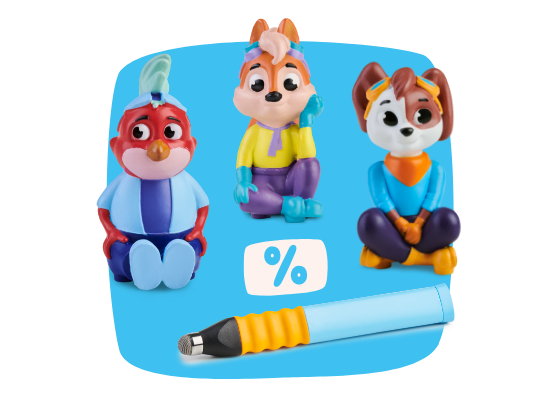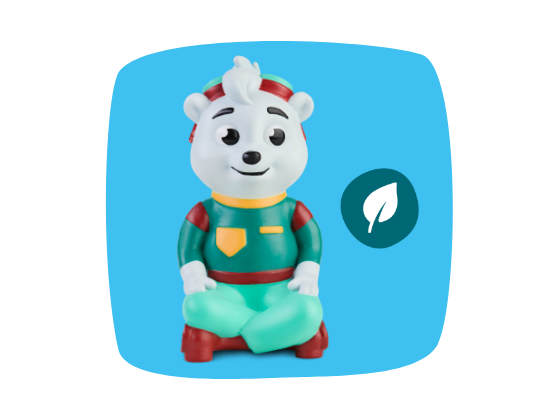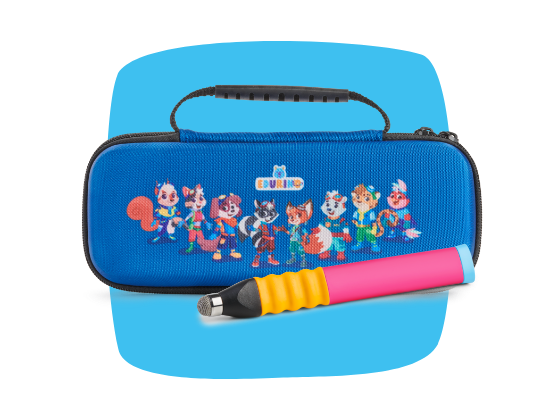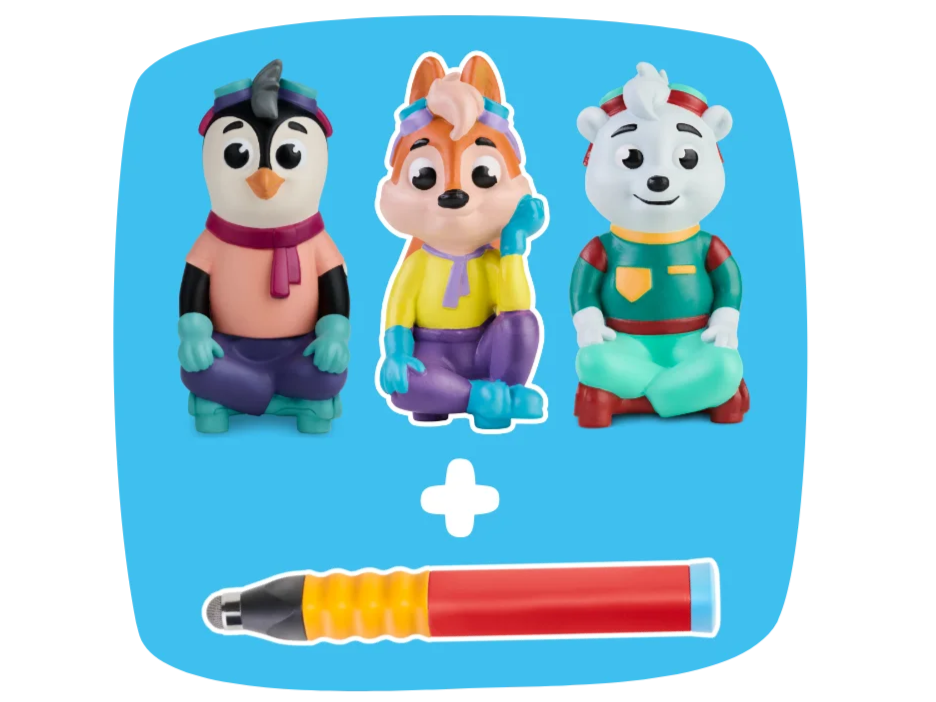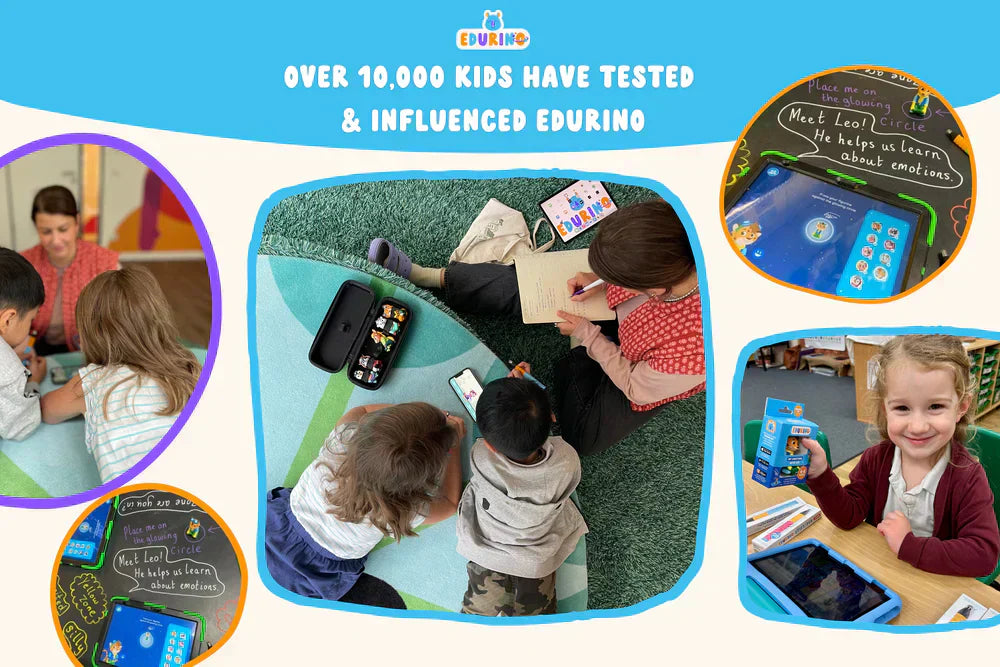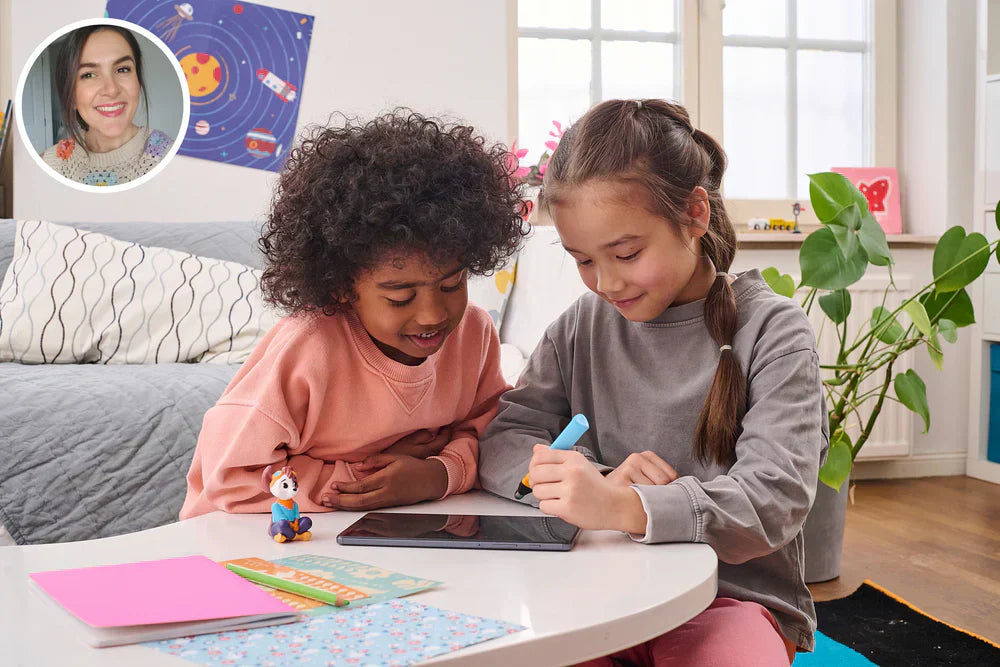At EDURINO, we believe that children are experts in learning. That's why we don't just develop learning games for children—we develop them together with them.
How can parents and teachers do the same? In this article, we share how we test our learning experiences with children—and how you can use these findings to support your own learners at home or in the classroom.
Why working with children is important
Imagine a group of 5-year-olds excitedly exploring the world of EDURINO—they're gripping our ergonomic pen and immersed in their favorite games. Some master the challenges with ease, others hesitate and frown. Some burst out laughing, while others are frustrated.
These moments tell us more than any data report. By testing in real classrooms, we ensure that our learning environments are fun, intuitive, and improve understanding and performance in the respective subject areas.
Try this at home or in class:
Observe how children interact with new learning tools. Are they enthusiastic? Do they struggle? Where do they show self-motivation or hesitation? Small clues can reveal whether an activity is interesting and age-appropriate for your learners.
What we learned: Three insights for educators and parents
- Pick up children where they are
Children learn best when the challenges are just right—not too difficult, but not too easy. Our classroom assessments help us adjust the difficulty level so that every child is motivated to continue.
Tip: When introducing a new activity, start with a "warm-up" session where children can explore freely before the structured learning begins. This reduces frustration and builds confidence .
- Make learning fun
We believe in the power of laughter—if kids aren't having fun, they won't stick around long enough to learn. That's why we test whether our games spark joy and curiosity (yes, burps are often a hit).
Tip: Look for genuine smiles and laughter—these are signs of genuine engagement. If a child doesn't respond, consider adjusting the format (e.g., turning a quiz into a hands-on game) .
- Feedback is worth its weight in gold
Instead of guessing what works, we listen. By collecting feedback from children, teachers, and parents, we refine every element of EDURINO.
The best tips for assessing learning progress:
Ask children open questions like:
- “What did you like best?”
- “Was anything too difficult or confusing?”
- “If you could change something, what would it be?”
How classroom insights shape EDURINO
We apply these insights in real time to improve our product:
- To date, over 10,000 children have tested and helped shape EDURINO!
- 97% of parents believe that EDURINO helps their child learn and develop important skills.
Feedback from teachers at our partner schools within the London Early Years Foundation :
EDURINO and key competencies:
"I now see it as a valuable component of early childhood education. All the benefits we've seen, especially for this age group, have increased my appreciation for it. It's a great support, especially with reading, writing, and math."
"The pen is especially helpful. The children develop their fine motor skills through the pen's guidance."
EDURINO and digital competence:
"The children are truly fascinated and engaged. I see their enthusiasm as soon as we bring it out. They're excited and want to participate."
"I'm a special education teacher and I'm really impressed by how child-friendly, motivating, and educationally valuable the app is. The pen is great, and the timer function is first-class. We love Edurino."
We're fortunate to collaborate with leading educational researchers from the University of Cambridge and University College London—their insights inform our curriculum design and ensure that EDURINO meets the goals of early childhood education. Learn more here.
Bringing the classroom home
Whether at school or at home, learning should be fun, effective, and child-friendly. The next time your child learns something new, try these simple testing techniques—and see how small adjustments can make a big difference!

